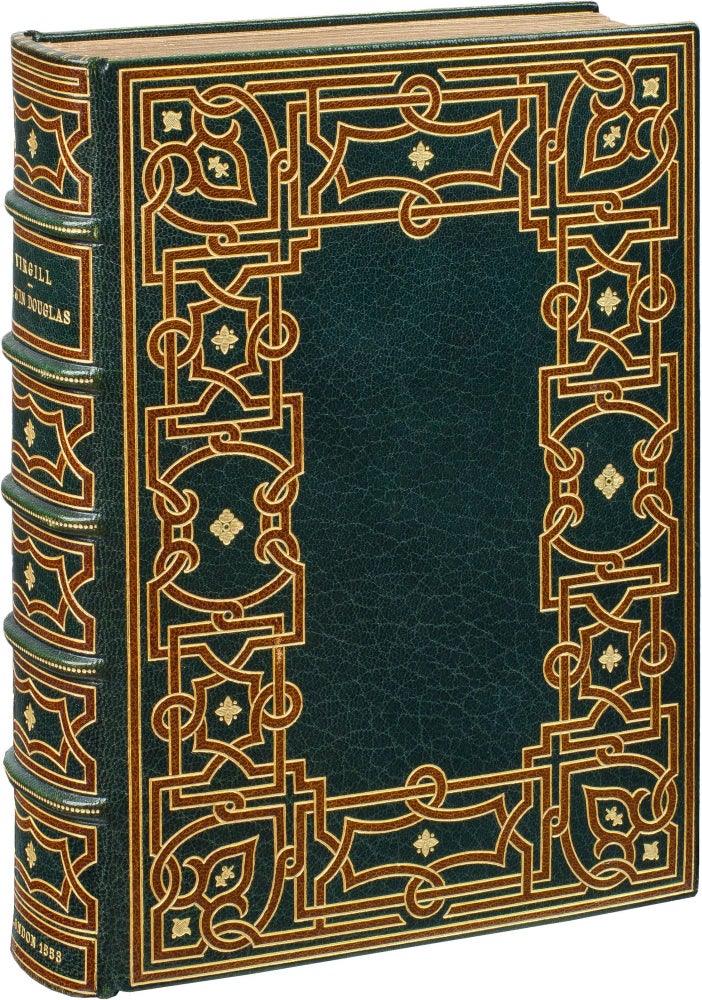The Aeneid
London: William Copland, 1553. First Edition. Full morocco. 1st edition in English, from the 1st century original (The XIII Bukes of Eneados of the Famose Poete Virgill). Fine, full French morocco (the pinnacle of gilded age American art), with staggeringly magnificent inlays and gilt of soaring technique (by Leon Maillard, Club, NY, 1904), for Robert Hoe, the first, great American book collector, owner of 2 Gutenberg Bibles and the only known 1st edition of Malory’s King Arthur, with his (Hoe’s not Arthur’s) gilt monogram to the front doublure. Some inner tears expertly repaired (no loss). 3 leaves smudged at upper margins (printer’s error), lightly washed, else fine (a flash of a copy), and let’s get real here. This is the heart of Latin literature, a 1st edition printed 458 years ago, half as old as ice, in spectacular condition, complete with both X9 and bb7 (usually mutually exclusive), as well as bb8, the final blank (other copies are not complete), and like Dorothy’s search for a way home, the best copy of The Aeneid is right here at your feet. Ex–Robert Hoe. Ex–Natalie Blair (Blairhame), Sotheby’s, $28,800, in 2004 (with both their bookplates). Near fine. Item #246
The Aeneid is the epic of Rome, celebrating the glory and heroism of the Roman race from the Trojan war (Aeneas’ father is an ally of King Priam) to the reign of Augustus, a chronological millennium of journey followed by conflict, an Odyssey followed by an Iliad. It survived the fall to become the empire’s main contribution to Western literature (Dante, for one, drew directly from book 6 having Virgil’s spirit guide him through the Inferno, and the heights of Purgatory). In the constant and frightening human rivalry between education and catastrophe, The Aeneid was the foundation of liberal scholarship from the Middle Ages to the late 19th century. Entwined throughout it are symbols, the most unmistakable of which are the Trojan Gods (the penates, epitomizing locality and ancestry), the gates of war (exemplifying the chaos in a world where the divine use mortals to settle their personal scores), the weather (a device of the Gods to connect the literal to the unseen, like a storm to divine will), fire (either destruction or erotic desire), and the golden bough (a sign of privilege). Among i t s striking originalities is Virgil’s presentation of Aeneas, a hero driven by his destiny, who struggles, not for booty, personal fame, or any existing country, but for a civilization that will exist in the distant future, that of Rome and Augustus. The narrative is one of revelation and sacrifice, each new unveiling of Aeneas’ grand fateimposing a greater burden of responsibility on him. In the end he is a monument, an unstoppable force, and an instrument of the gods.
Price:
$55,000.00


